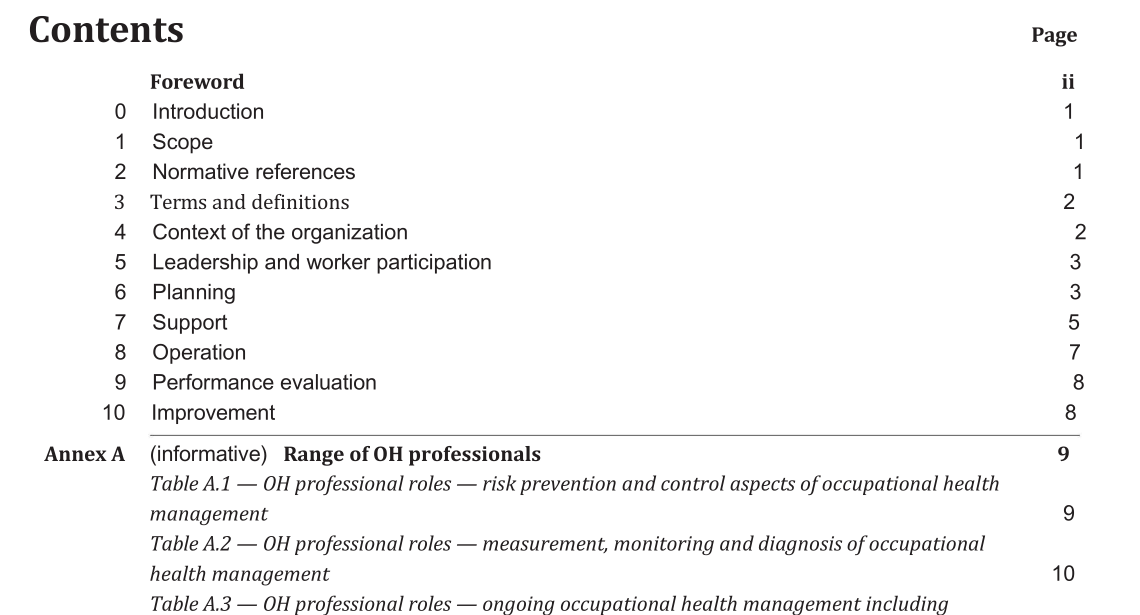BS 45002-1:2018 pdf download.Occupational health and safety management systems – General guidelines for the application of ISO 45001
3 Terms and definitions
For the purposes of this British Standard the terms and definitions given in BS ISO 45001 and the following apply. NOTE 1 There are a number of terms defined in BS ISO 45001, including commonly used terms. However, when using BS ISO 45001 it is important to take note of these technical definitions to ensure there is no misunderstanding in its application. For example, small businesses do not always realize that the term “organization” refers to them as well as larger companies (or public bodies, charities, etc.). An organization can also be used to describe one part of a business, e.g. one department or one site – if that is the extent of the OH&S management system. Similarly, the term “top management” refers to whoever “directs or controls” the organization – the top level decision maker(s). In practical terms, top management can mean a small business owner, the executive board or, in a non-hierarchical structure, everyone involved in taking high-level decisions. The definition of “worker” is also worth noting. In BS ISO 45001 worker is all-inclusive and refers to everyone working under the control of the organization, including business owners, executive boards, senior managers, interns, volunteers, all employees and contractors. NOTE 2 All of the terms and definitions within BS ISO 45001 can be found on the ISO Online Browsing Platform: http://iso.org/obp [last viewed 31 July 2018].
6.2 Identification and assessment of occupational health risks and opportunities
6.2.1 Risks
The organization should plan to eliminate OH hazards if it can. If it cannot eliminate the hazard, it should plan to reduce the risk to as low as it can, taking into account the level of risk, the benefit that can be achieved, and the resources available (e.g. by using less hazardous materials, using quieter equipment, reorganizing work ).
Occupational ill health is caused or made worse by worker exposure to different types of hazards, including:
a) chemical (e.g. fumes, asbestos, silica, dusts);
b) physical (e.g. noise, vibration, extremes of temperature, extremes of pressure);
c) biological (e.g. bacteria, viruses, fungal spores, enzymes, animal proteins, genetic material);
d) ergonomic (e.g. lifting, lowering, pulling and pushing, posture, repetitive movement); and
e) psychosocial (e.g. job security, stress, bullying, harassment, excessive work demands, shift work,work relationships, lack of control).
The organization should identify the hazards to which workers and those sharing the workplace are exposed. The risk from exposure to the hazards should be assessed, based on:
1) likelihood;
2) extent of exposure; and
3) short and long‑term impact on health (including delayed onset, e.g. noise‑induced hearing loss).
NOTE 1 Many cases of OH disease can take many years to show (long latency), e.g. noise-induced hearing loss, lung disease due to exposure to silica dust or asbestos. It is therefore essential to keep records of exposure and health surveillance.
If there is a possibility that workers could be exposed to OH hazards that exceed legal limits, the organization should plan appropriate occupational health surveillance, e.g. skin inspections, hearing and lung function tests.
BS 45002-1:2018 pdf download
